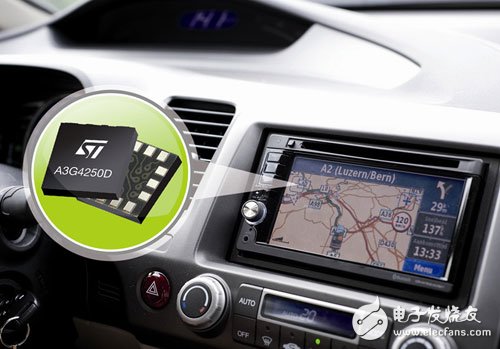Car electronics need "full-live" main chip and peripheral devices
With the support of international standardization organizations (such as ITS) and national governments, many countries in Europe, the United States, and Asia have initiated many R & D and pilot projects for Internet of Vehicles. These projects develop Internet of Vehicles from different perspectives: intelligent transportation processing, advanced security, tracking information, improved positioning accuracy, mobile location services, advanced bridge tolling, pay-per-use / behaviour insurance systems, and this covers the main aspects of Internet of Vehicles terminal electronics Features and services. "All of these functions are inseparable from various forms of integrated circuits, and will continue to drive the growth of the semiconductor market." Edoardo Merli, Market Application Director, Automotive Products Division, STMicroelectronics Greater China and South Asia.
In order to meet the requirements of Internet of Vehicles, in-vehicle electronics needs a "full-live" main chip and peripheral devices.

Integration speed brings technical challenges
For the Internet of Vehicles, because of the many functions, the integration of the chip becomes more necessary.
In order to meet the requirements of Internet of Vehicles, in-vehicle electronics needs a "full-live" main chip and peripheral devices. Edoardo Merli said that this includes a vehicle network, that is, a CAN controller that collects vehicle status information and directs peripheral devices to perform diagnostics; sensors such as accelerometers, gyroscopes, etc., to upload as accurate data as possible to the "cloud"; vehicle data interfaces, such as Bluetooth and WiFi; audio and video processing, used for voice recognition and voice control interactive interface and image-based active safety information; positioning device, while supporting GPS, GNSS, Galileo, Beidou and other multi-location standards and multi-satellite systems; automotive and automotive / basic The communication devices of the facility (3G / 4G mobile phones, WiFi, 802.11p, electronic tag RFID), the fusion of these applications is the basis of the Internet of Vehicles, so the Internet of Vehicles chip must implement these functions. In addition, there must be an interactive interface (that is, a touch screen) between the car and a tablet or smartphone. To avoid affecting the driver's attention, a voice-activated interactive interface is also required.
The requirements for the chip are correspondingly higher. "In addition to having powerful computing capabilities, the chips used in Internet of Vehicles terminal products also need to be able to support wireless communication, satellite navigation, word processing, voice interaction and other functions." Huang Xi, Freescale Automotive Microcontroller Market Development Manager, pointed out .
Chen Weijin, general manager of the automotive electronics business unit of NXP Semiconductors Greater China, also said that the Internet of Vehicles has four innovative examples to illustrate the changing chip needs, one is Ethernet, the other is Near Field Communication (NFC), and the third is Car -to-X communication, the fourth is security to protect the car from manipulation and attacks. "In connected cars, security and data protection are becoming more and more important to ensure passenger safety and require expertise in secure microcontrollers and encryption technologies." Chen Weijin pointed out.
Rik Graulus, director of product marketing at Spansion, also said that as the amount of data processed increases, the demand for computing power for assisted driving systems also increases accordingly. Taking into account the requirements of automobile flexibility, comfort and energy saving, the electronic control unit needs to be more compact and low power consumption, which puts extremely high requirements on NOR flash memory for vehicles.
In the automotive electronics industry, there has always been a trend towards integration. For the Internet of Vehicles, the integration of chips is more necessary because of the many functions. "In the specific chip integration program, there are the integration of digital circuits and analog circuits, the integration of multiple communication interfaces, and the integration of different functional modules." Huang Xi pointed out.
The high degree of integration of system solutions brings about savings in R & D investment and shortened product cycles, but it also brings technical challenges. Chen Weijin said that the integration of analog signal units can include many aspects, such as communication signals, positioning signals, voice signals and so on. "Currently in the field of Internet of Vehicles, NXP has integrated all the processors in the Internet of Vehicles T-box into one module, namely ATOP, which achieves high integration, high integration and high performance. The MCU interface is integrated in the ATOP module The processor, GSM / WCDMA baseband processor, GPS / Glonass front-end chip, and baseband wireless front-end module are more innovatively introduced and integrated with the NFC module, making it a complete set of digital analog highly integrated Internet of Vehicle terminal solutions. Mentioned.
We'd love to create a bespoke Neon LED Sign just for you!
Our signs are made to order. We can create anything your heart desires! Weddings, events, business signs, in your home - big, small - we can make it a reality!
MOQ: 1 piece only.
Neon Wedding Sign, Neon Party Sign, Neon Wedding Light
Shenzhen Oleda Technology Co.,Ltd , https://www.baiyangsign.com